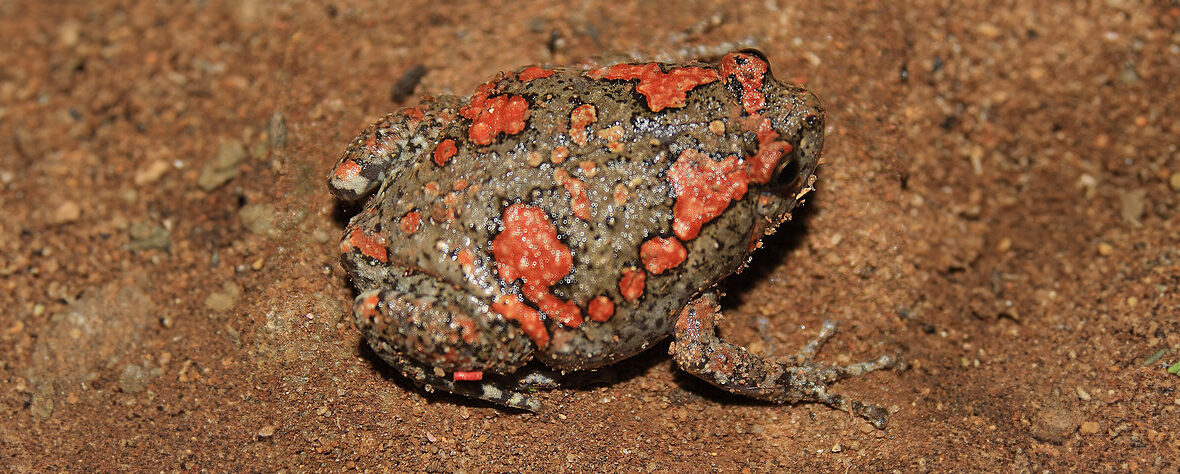
The Sri Lankan painted frog, aka Sri Lankan bullfrog, Indian painted frog, Sri Lankan kaloula, kaloula frog, Ceylon kaloula, or painted globular frog, hails from Sri Lanka, Bangladesh, India, and Nepal. They prefer dry forests, wetlands, coconut & rubber plantations, rice fields, and disrupted habitats close to homes. The IUCN lists these frogs as Least Concern, despite the host of threats they face. Their populations are decreasing though.
First the Stats…
Scientific name: Uperodon taprobanicus
Weight: Up to 2+ ounces
Length: Up to 2.95 inches
Lifespan: Up to 6+ years
Now on to the Facts!
1.) These frogs face the threats of habitat loss and destruction at the hands of residential and commercial developments, logging, roads and railroads (which result in division of habitats and vehicle strike (being hit by vehicles); and pollution.
2.) They are found from sea level up to 4,265 foot elevations.
3.) Sri Lankan panted frogs are fossorial (spend their days underground, buried in leaf litter or soil).
4.) These frogs are, like so many other frogs, nocturnal (active at night).
5.) Even though they are primarily terrestrial (spend their lives on the ground) they can also climb well too.
But wait, there’s more on the Sri Lankan painted frog!
6.) A wide variety of insects are preyed upon.
7.) Females lay a mass of eggs in water that float in a single layer at the top of the water body.
Did you know…?
The Sri Lankan painted frog has been documented as having a mutualistic relationship with a tarantula species. The Poecilotheria tarantula keeps out frog predators, while the frog keeps out ants that might attack the tarantula’s eggs.
8.) Tadpoles are black in color and feed on diatoms, algae, and microscopic planktonic organisms.
9.) During the dry season, they will bury themselves in mud or thick leaf litter and brumate (hibernation for reptiles and amphibians) until the rainy season.
10.) When threatened, they have the ability to excrete a toxic glue-like substance from their bodies that is used to thwart attacks. The toxins they produce can cause illness or death in smaller animals that try to prey on them. However, they are not harmful to humans unless a large amount of the toxin is ingested.
Now a Short Sri Lankan Painted Frog Video!
Be sure to share & comment below! Also, check out the Critter Science YouTube channel. Videos added regularly!
Want to suggest a critter for me to write about? Let me know here.
Some source material acquired from: Wikipedia & IUCN
Photo credit: Vivek Raj



